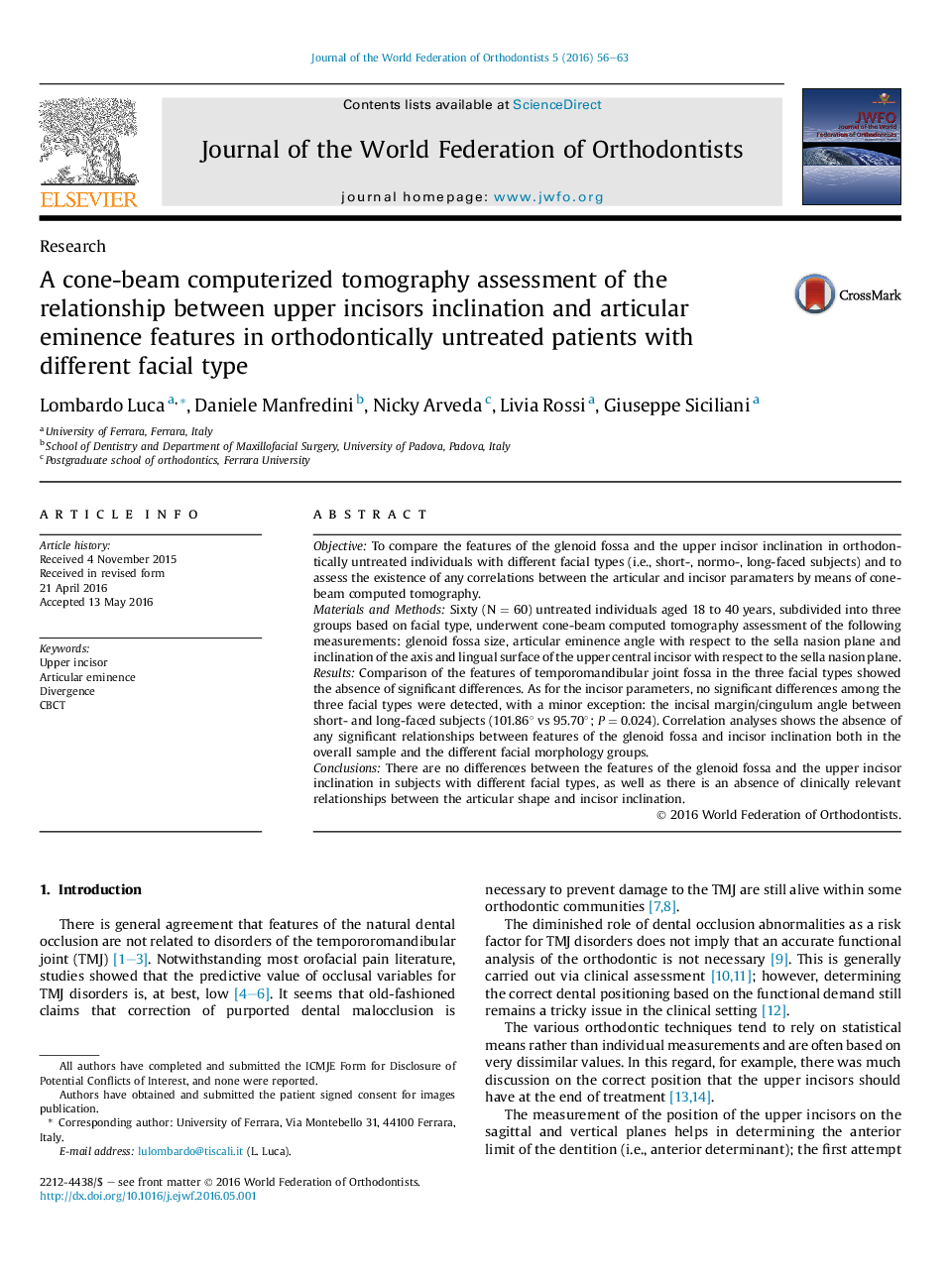| Article ID | Journal | Published Year | Pages | File Type |
|---|---|---|---|---|
| 3484842 | Journal of the World Federation of Orthodontists | 2016 | 8 Pages |
ObjectiveTo compare the features of the glenoid fossa and the upper incisor inclination in orthodontically untreated individuals with different facial types (i.e., short-, normo-, long-faced subjects) and to assess the existence of any correlations between the articular and incisor paramaters by means of cone-beam computed tomography.Materials and MethodsSixty (N = 60) untreated individuals aged 18 to 40 years, subdivided into three groups based on facial type, underwent cone-beam computed tomography assessment of the following measurements: glenoid fossa size, articular eminence angle with respect to the sella nasion plane and inclination of the axis and lingual surface of the upper central incisor with respect to the sella nasion plane.ResultsComparison of the features of temporomandibular joint fossa in the three facial types showed the absence of significant differences. As for the incisor parameters, no significant differences among the three facial types were detected, with a minor exception: the incisal margin/cingulum angle between short- and long-faced subjects (101.86° vs 95.70°; P = 0.024). Correlation analyses shows the absence of any significant relationships between features of the glenoid fossa and incisor inclination both in the overall sample and the different facial morphology groups.ConclusionsThere are no differences between the features of the glenoid fossa and the upper incisor inclination in subjects with different facial types, as well as there is an absence of clinically relevant relationships between the articular shape and incisor inclination.
